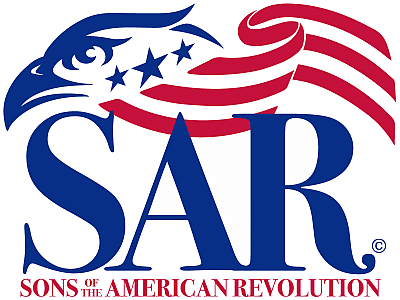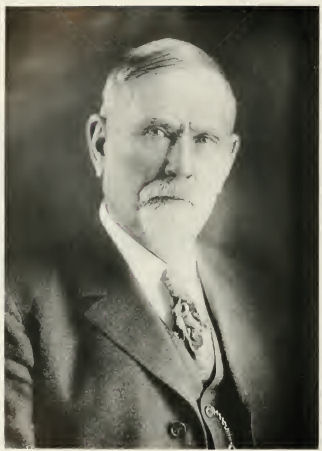

Khleber Miller Van Zandt, the son of Isaac Van Zandt and Frances Cooke (Lipscomb) Van Zandt, was born near Salem, Franklin County, Tennessee, on November 7, 1836. In 1839, the family moved to the Republic of Texas, settling in Elysian Fields in Harrison County. His father, Isaac, helped to survey and lay out the town of Marshall about 1842.
Isaac Van Zandt would become one of the shapers of Texas, along with his son as a shaper of Fort Worth. During 1843 and 1844, the Van Zandt family was living in Washington, D.C., where Isaac had moved in 1842 upon his appointment by President Sam Houston as Texas chargé d’affaires to the United States. He negotiated the treaty of annexation of Texas. Isaac died in 1847 as the result of an attack of yellow fever, and in 1850, Frances Cooke Van Zandt and children were again living in Harrison County. Frances Van Zandt lived out her life in Fort Worth, where she died in 1909. Van Zandt County is named for Isaac Van Zandt.
Khleber Miller Van Zandt attended Marshall University in Marshall, Texas, and then furthered his education at Franklin College, near Nashville, Tennessee. Upon graduation, he returned for a short time to Marshall, where he worked in a dry-goods store and helped organize the Christian Church. He was hired by the Vicksburg, Shreveport and Texas Railway Company in Louisiana and worked securing deeds for right-of-way for the railroad. He returned to Marshall and was admitted to the bar in 1858. He practiced law until the outbreak of the Civil War.
Van Zandt helped organize and became captain of Company D, Seventh Texas Infantry. He saw action in Mississippi and Tennessee that included the Battle of Fort Donelson and the Battle of Missionary Ridge. He was taken prisoner on February 16, 1862, during the capture of Fort Donelson, was exchanged on September 16, 1862, and received a certificate of disability in 1864 with the rank of major and afterward was known in civilian life in Fort Worth as “the Major.”
After the war, Van Zandt moved to Fort Worth, arriving in August 1865. He found “a sad and gloomy picture,” as the town had a population of only 250 people and lacked “even a saloon.” The courthouse lacked a roof. The few people living in Fort Worth were living in a few modest wooden buildings on a few dirt streets. He bought the city block where Sundance Square Plaza is today. He opened a dry-goods business across from the courthouse, which became very successful and allowed him to participate in other business endeavors.
The Van Zandt family initially lived in a five-room cottage on a farm where Trinity Park now is. The 600-acre farm and cottage he acquired in 1871 now encompasses the Cultural District and surroundings. The 21st century boundaries of the old Van Zandt property would be Fifth Street to the north, Montgomery Street on the west, just beyond the banks of the Trinity River on the east and Interstate Highway 30 to the south. When you are driving around the city, west of the downtown area, and then visit the Fort Worth Botanic Garden, Trinity Park, Kimbell Art Museum, Fort Worth Modern Museum, Amon Carter Museum, or visit the retail developments in the Seventh Street area, you are on land that was previously part of the Van Zandt farmland. Because of its historical significance, the cottage has earned a listing in the National Register of Historic Places and has been designated as a City of Fort Worth Historic and Cultural Landmark and as a Recorded Texas Historical Landmark. The cottage is the city’s oldest dwelling still standing on its original site. Eventually, the family lived in a grand home at 800 Penn Street on Quality Hill. He was a teacher or superintendent of Sunday School at First Christian Church for more than a half-century.
In 1874, he and three partners, John Peter Smith, James Jones Jarvis, and Thomas A. Tidball, formed Tidball, Van Zandt and Company, a bank that was the forerunner of Fort Worth National Bank. In 1876, Van Zandt was largely responsible for bringing the Texas and Pacific railroad to town. He donated land for the T&P reservation and was president of the Tarrant County Construction Company, which was formed to pay a contractor to grade the T&P roadbed from Eagle Ford, west of Dallas, to Fort Worth and to install bridges and culverts for the tracks. Van Zandt served two institutions as president for a total of fifty-six years. He was also president of the K.M. Van Zandt Company and a director of the Fort Worth Life Insurance Company, as well as director of the Fort Worth and Denver Railway and the Fort Worth Street Railway Company.
Van Zandt was cofounder of the Fort Worth Democrat, the town’s first newspaper. He helped obtain the first post office and to build a streetcar system that was one of the first in the state. He served on the Fort Worth school board for at least twenty years. In addition to the Texas & Pacific Railroad, Van Zandt helped bring the Santa Fe and the Missouri, Kansas and Texas (MKT) railroads to Fort Worth. He represented the Twenty-first District in the Thirteenth Legislature, 1873—1874, but preferred business and civic duties to politics.
Khleber Miller Van Zandt was married three times: to Minerva Peete, on April 9, 1857; after her death to her sister, Mattie Peete, on July 22, 1869; and after her death to Octavia Pendleton, on October 8, 1885. He fathered 14 children and many of those who lived to adulthood were later prominent Fort Worth business and social leaders. Until a few weeks before his death, he was still going in to his office at Fort Worth National Bank each workday. Khleber Miller Van Zandt died in Fort Worth on March 19, 1930, at the age of 93 and is buried in Oakwood Cemetery.
When Major K.M. Van Zandt arrived at what was left of Fort Worth in 1865, he found a small hamlet on the verge of extinction. By the time of his death in 1930, Fort Worth was a bustling community well on its way to becoming a major center of commerce and culture in North Texas. This success was due largely to his dedication to service, community, and collaboration to create a brighter future and a better way of life for Fort Worth citizens, earning him the title of “Mr. Fort Worth.”